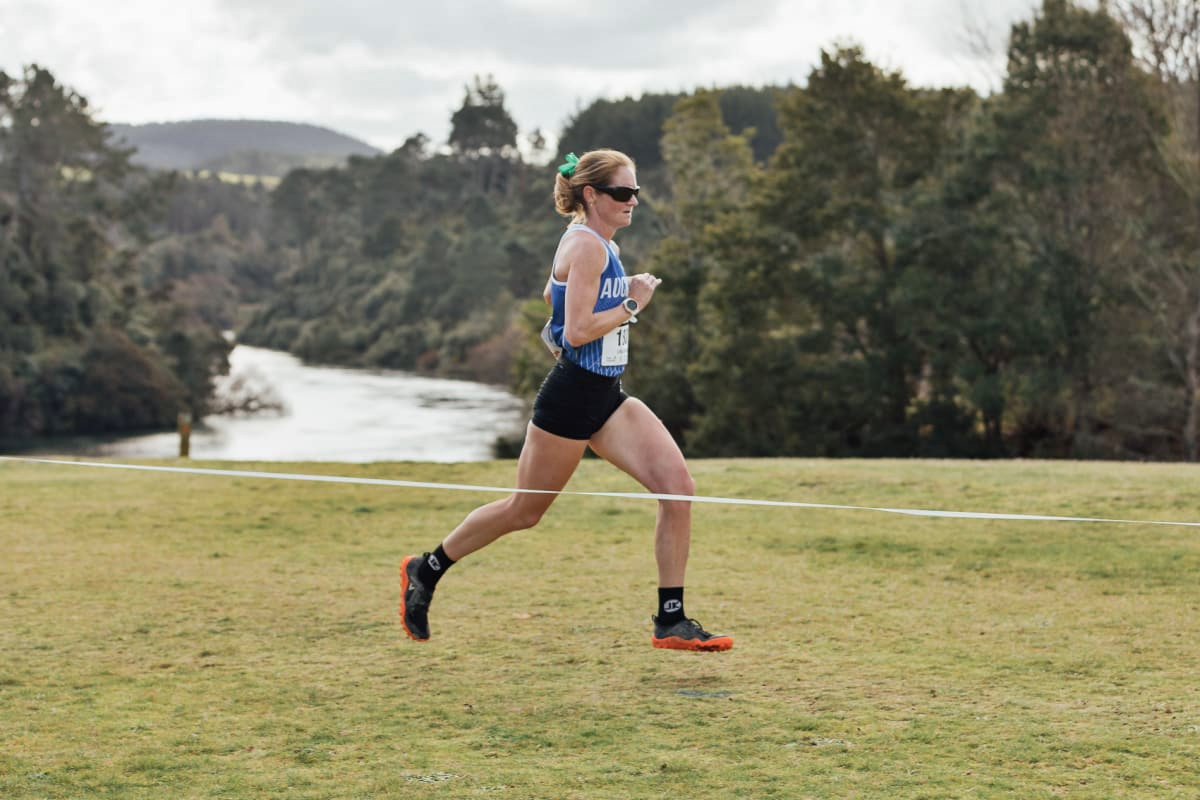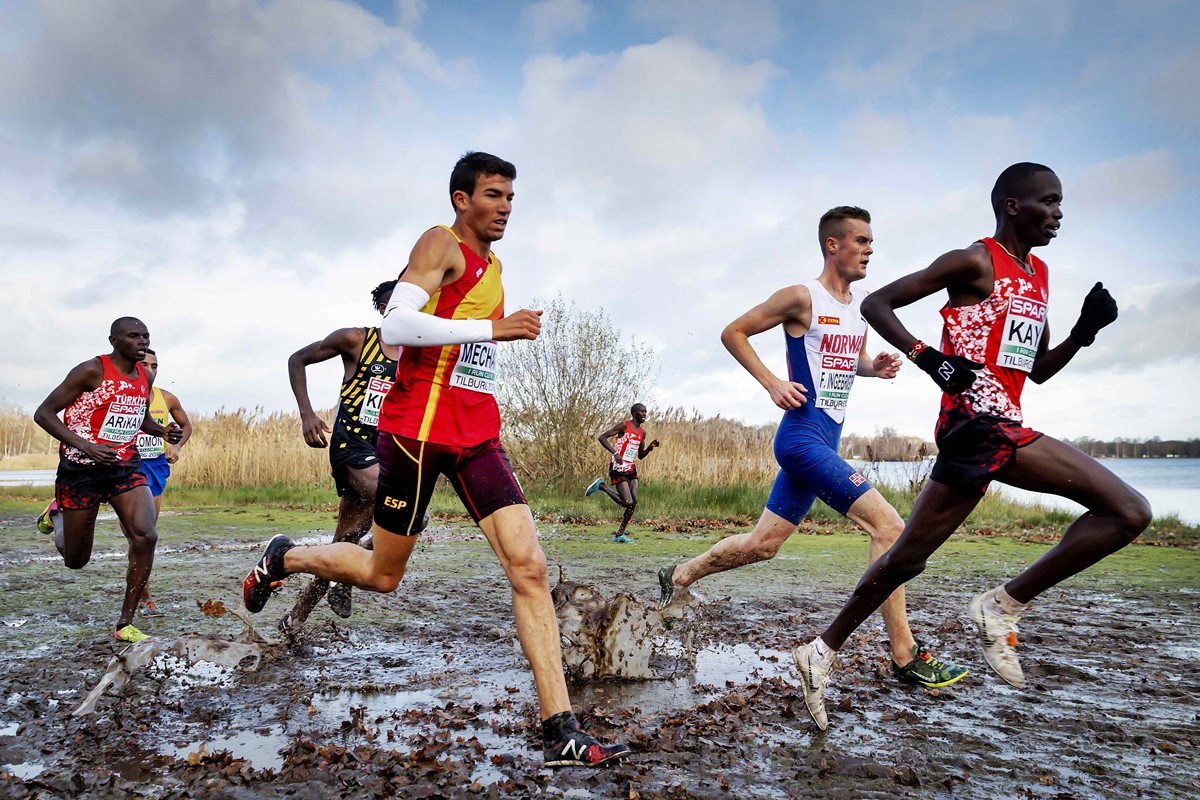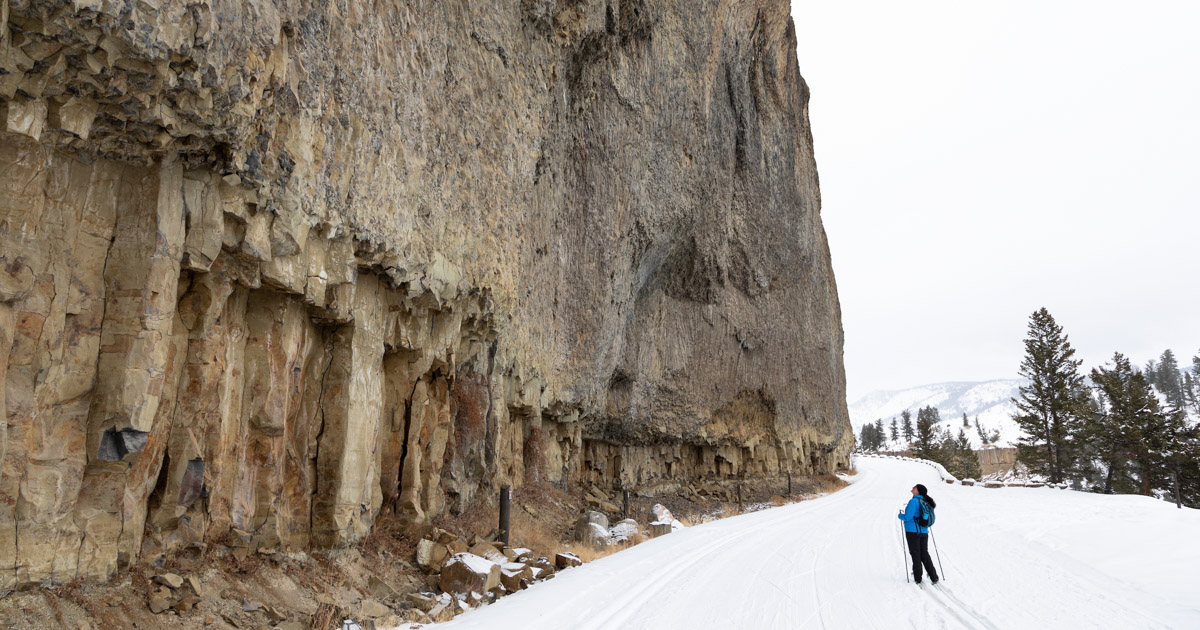

Featured
How Long To Walk Cross Country
Modified: August 18, 2023
"Discover the Featured article exploring the journey of walking cross country, and find out how long it takes to complete this epic adventure."
Introduction
Walking cross country is a truly rewarding experience, allowing you to immerse yourself in nature, discover picturesque landscapes, and challenge your physical endurance. Whether you are embarking on a long-distance trek or simply want to explore the countryside on foot, it’s important to have an understanding of how long it may take to complete your journey.
Several factors come into play when determining the duration of a cross-country walk. The terrain and elevation, distance, walking speed, weather conditions, physical fitness level, route selection, planning and preparation, equipment and gear, safety considerations, accommodations and rest, wildlife and environmental concerns – all contribute to the overall time required to walk across a country.
Understanding these factors and making informed decisions will help you better estimate the duration of your walk and ensure a smooth and enjoyable journey. In this article, we will discuss each of these factors in detail and provide valuable insights to assist you in planning your cross-country walking adventure.
Factors Affecting Walking Time
When estimating how long it will take to walk across a country, there are several key factors that can significantly impact the duration of your journey. These factors include terrain and elevation, distance, walking speed, weather conditions, physical fitness level, route selection, planning and preparation, equipment and gear, safety considerations, accommodations and rest, and wildlife and environmental concerns.
The terrain and elevation of the country you are walking across will play a major role in determining how long it takes to complete your journey. Hilly or mountainous regions will slow down your pace, while flat terrains will allow for faster progress. Additionally, steep inclines and uneven surfaces can be physically demanding, affecting your speed and overall walking time.
The distance you need to cover is another crucial factor in estimating walking time. Naturally, a longer distance will require more time to complete. It’s important to plan your route carefully and calculate daily distances to have a realistic idea of how many days or weeks your journey might take.
Walking speed is another consideration. Everyone has their own comfortable pace, and it’s essential to take into account your physical capabilities and endurance. Some walkers can maintain a brisk pace, while others may prefer a more leisurely stride. Keep in mind that walking too fast for an extended period can lead to fatigue or injuries, so finding a sustainable speed is key.
Weather conditions can greatly impact walking time as well. Adverse weather, such as heavy rain, strong winds, extreme heat, or cold temperatures, can slow down your progress or even make walking unsafe. It’s important to consider the season and the climate of the country you are walking through to plan accordingly and make adjustments if needed.
Your physical fitness level will also influence how long it takes to walk across a country. Regular exercise and training leading up to your journey will improve your endurance, strength, and overall fitness, enabling you to walk for longer periods without experiencing excessive fatigue.
The chosen route will also affect walking time. Some routes may be more direct and efficient, while others may detour to scenic spots or historical landmarks. While the latter may provide a more enjoyable experience, they may also add extra distance and time to your journey.
Proper planning and preparation are crucial to estimating walking time accurately. Research the terrain, distance, and available resources along your route. Create a detailed itinerary, allowing for rest days, and consider the availability of accommodations, food, and water sources.
Having the right equipment and gear is essential for a comfortable and safe journey. Ensure you have sturdy, comfortable footwear, appropriate clothing for various weather conditions, a well-fitted backpack, navigational tools, and any necessary safety equipment.
While walking cross country can be an exhilarating adventure, it’s important to prioritize safety. Be aware of potential hazards, such as wildlife encounters, extreme weather events, or dangerous terrain. Take necessary precautions, follow local regulations, and be prepared with a first aid kit.
Lastly, factor in the need for rest and accommodation during your journey. Plan your route to include regular rest days or overnight stops to avoid overexertion and give your body time to recover.
By considering all these factors, you can estimate a more realistic walking time across a country, ensuring a safe, enjoyable, and successful journey.
Terrain and Elevation
The terrain and elevation of the country you are walking across play a significant role in determining the duration of your journey. The type of terrain and the changes in elevation you encounter can affect your walking speed and overall progress.
If the country you are walking across is predominantly flat or gently rolling, you can generally maintain a steady pace and cover more ground in a shorter amount of time. On the other hand, if you encounter hilly or mountainous regions, your pace may slow considerably, as you navigate steep inclines, rocky terrain, or uneven surfaces.
Walking uphill requires more effort and can significantly slow down your progress. It can be physically demanding, especially if the inclines are steep or prolonged. You may need to take more frequent breaks or walk at a slower pace to conserve energy.
Similarly, walking downhill can also impact your speed and require careful navigation. Descending steep slopes can be challenging, especially if the path is slippery or unstable. It’s important to exercise caution and take your time to ensure your safety.
In addition to changes in elevation, the type of terrain you encounter can also affect your walking time. Walking on paved roads or well-maintained trails allows for easier and faster travel compared to walking on rugged or off-road paths. Pay attention to the condition of the terrain and adjust your estimate accordingly.
It’s important to research the topography of the country you are walking across to understand the challenges you may face. Maps, elevation profiles, and online resources can provide valuable insights into the terrain and elevation changes along your route.
When planning your journey, consider the terrain and elevation carefully. If you anticipate long stretches of challenging terrain or significant elevation changes, factor in extra time for slower progress and possible fatigue. Be realistic about your physical abilities and plan rest stops accordingly.
By taking into account the terrain and elevation, you can better estimate the time required to walk across a country and ensure a more enjoyable and manageable journey.
Distance
The distance you need to cover is a crucial factor in estimating the time it will take to walk across a country. Naturally, a longer distance will require more time and effort to complete.
When planning your journey, it’s important to determine the total distance you will be walking. This can be done by breaking down your route into smaller sections and calculating the distance of each leg. There are several online tools and apps available that can assist you in accurately measuring distances.
Consider your average daily walking distance. Some walkers are comfortable covering long distances each day, while others prefer a more leisurely pace. It’s important to find a balance that suits your fitness level and endurance. Be mindful not to overexert yourself by attempting to walk too far in a single day.
Take into account the availability of accommodation and rest areas along your route. If there are limited options, you may need to adjust your daily distances accordingly. It’s also wise to plan for rest days or shorter walking days to give your body time to recover and prevent burnout.
Keep in mind that unforeseen circumstances, such as inclement weather or unexpected obstacles, may affect your daily distance. Being flexible and adaptable in your schedule will help you navigate these challenges without feeling rushed.
By accurately estimating the total distance and breaking it down into manageable sections, you can plan your journey more effectively and have a realistic understanding of the time required to walk across a country.
Walking Speed
Your walking speed is an important factor to consider when estimating the time it will take to walk across a country. Everyone has their own natural pace, and it’s essential to take into account your individual speed.
Some walkers have a brisk and energetic pace, allowing them to cover more ground in a shorter amount of time. Others prefer a more leisurely stride, taking time to admire the scenery and enjoy the journey at a relaxed pace.
It’s important to find a walking speed that is comfortable for you and allows you to maintain a consistent pace throughout your journey. Pushing yourself to walk too fast for extended periods can lead to fatigue, muscle soreness, or even injuries. Overexertion can also impact your overall enjoyment of the journey.
When estimating walking time, consider your average speed over a longer distance rather than your speed in short bursts. This will give you a more accurate idea of how long it will take to cover the entire distance of your cross-country walk.
Factors such as terrain, elevation changes, and weather conditions can also affect your walking speed. Steep inclines, challenging terrain, or adverse weather can slow your pace and require you to make adjustments to your estimated time.
It’s important to listen to your body and take breaks when needed. Regular rest stops can help prevent fatigue and keep your energy levels up. Use these breaks to rehydrate, refuel, and give your muscles a chance to recover.
Lastly, it’s essential to have a realistic understanding of your walking speed and adjust your route and daily distances accordingly. Consider factors such as rest days, sightseeing stops, or detours that may affect your overall pace. Being flexible in your schedule will allow you to enjoy your journey without feeling rushed.
By considering your walking speed, planning realistic distances, and allowing for breaks, you can accurately estimate the time it will take to walk across a country and ensure a more enjoyable and manageable experience.
Weather Conditions
Weather conditions can significantly impact your walking time when crossing a country. Adverse weather, such as heavy rain, strong winds, extreme heat, or cold temperatures, can affect your pace and overall progress.
Walking in heavy rain or strong winds can make the terrain slippery, muddy, or unstable, slowing down your pace and requiring more attention to each step. It’s important to have the appropriate gear, such as waterproof clothing and sturdy footwear, to protect yourself from the elements.
In extreme heat, walking can be physically draining and may require more frequent rest stops and hydration breaks. It’s crucial to stay hydrated and protect yourself from the sun by wearing sunscreen, a hat, and lightweight, breathable clothing.
Cold temperatures can also affect your pace. Walking in cold conditions may require additional layers of clothing and appropriate insulation to stay warm. Take breaks in warm shelters or rest areas to avoid prolonged exposure to the cold.
Before embarking on your journey, research the typical weather patterns and seasons of the country you will be walking across. This will help you anticipate and prepare for any weather challenges you may encounter along the way.
Be flexible in your schedule and be prepared to adjust your walking time based on weather conditions. If you encounter severe weather, it may be necessary to take shelter or pause your journey temporarily for safety reasons.
Keep an eye on weather forecasts and updates during your walk. Be prepared to make necessary adjustments to your route or daily distance if weather conditions become unsafe or significantly impact your progress.
By considering weather conditions, planning accordingly, and adjusting your walking time when needed, you can have a safer and more enjoyable cross-country walking experience.
Physical Fitness Level
Your physical fitness level plays a crucial role in determining your walking time when crossing a country. Your overall endurance, strength, and stamina will directly impact your ability to cover long distances on foot.
Regular exercise and training leading up to your journey are essential in preparing yourself for the physical demands of a cross-country walk. Engaging in activities such as walking, hiking, or other forms of cardio and strength training can help improve your fitness level and build your endurance.
Assess your current fitness level and be realistic about your capabilities. If you are relatively new to walking long distances, you may need to start with shorter walks and gradually increase your mileage over time.
Understand your body’s limitations and listen to its signals. Overexertion can lead to fatigue, muscle soreness, injuries, and ultimately, a negative impact on your overall experience. It’s important to give yourself ample rest and recovery time, especially during longer walks.
When estimating walking time, take into account your average walking speed while considering your fitness level. Factor in additional time for breaks and rest days to allow your body to recover and rejuvenate.
During your cross-country walk, be attentive to your body’s needs. Stay hydrated, fuel yourself with nutritious snacks and meals, and take breaks as needed. Pay attention to any signs of fatigue or discomfort, and don’t hesitate to adjust your pace or modify your walking schedule if necessary.
Remember, walking cross country is a challenging endeavor that requires a reasonable level of physical fitness. By gradually building up your fitness level, understanding your limitations, and listening to your body, you can estimate a more accurate walking time and ensure a safer and more enjoyable journey.
Route Selection
The route you choose to walk across a country can have a significant impact on the time it takes to complete your journey. When selecting a route, consider factors such as distance, terrain, accommodations, attractions, and personal preferences.
Some walkers prefer to take a more direct route, which allows for faster progress and a quicker overall walking time. These routes often follow main roads or well-established trails, providing easier navigation and access to amenities.
On the other hand, some walkers prefer to take a more scenic or adventurous route, which may involve detours to explore landmarks, natural wonders, or cultural sites. While these routes can add extra distance and time to your journey, they can offer richer experiences and opportunities for discovery.
Research the available routes and gather information about the terrain and elevation changes along each option. Consider the level of difficulty and how it aligns with your fitness level and walking abilities.
Some walkers may choose to follow established long-distance trails or pilgrimage routes, which offer well-marked paths and a network of accommodations and services along the way. These routes often have informative guidebooks or online resources available to assist with planning and navigation.
Consider the availability of accommodations and rest areas along your chosen route. Ensure there are sufficient options for lodging, campsites, or other places to rest and recharge. Knowing where these facilities are located will help you plan your daily distances and estimate your walking time more accurately.
Personal preferences also play a role in route selection. Consider the type of scenery you enjoy, whether it’s coastal views, mountain landscapes, or rolling countryside. Taking a route that aligns with your interests and preferences can enhance your overall walking experience.
When estimating walking time, be mindful of any deviations or detours you plan to take. These can add extra distance and time to your journey, so factor them into your calculations.
By carefully selecting a route that aligns with your goals, preferences, and capabilities, you can estimate a more accurate walking time and create a rewarding and fulfilling cross-country walking experience.
Planning and Preparation
Proper planning and preparation are key factors in estimating the time it will take to walk across a country. Thoroughly researching and organizing your journey will help you navigate efficiently and make the most of your time on the trail.
Start by gathering information about the country you will be walking across. Understand the local regulations, customs, and any permits or visas that may be required. Familiarize yourself with the culture and traditions to ensure a respectful and enjoyable experience.
Create a detailed itinerary that outlines your daily distances, rest days, and any specific landmarks or attractions you want to visit along the way. Be sure to consider available accommodations, food options, and water sources to plan your stops accordingly.
Research the terrain and elevation changes along your route. This information will help you estimate the difficulty level of each section and adjust your walking time accordingly.
Take into account the time of year and weather patterns. Plan your journey during a season that offers favorable weather conditions for walking and avoids extreme temperatures or adverse weather events.
Consider the availability of resources and services along your route. Ensure you have access to basic necessities, such as food, water, medical facilities, and communication options. Pack a comprehensive first aid kit and familiarize yourself with basic emergency procedures.
During the planning phase, consider any logistical challenges, such as transportation to and from the starting and ending points of your journey. Arrange for any necessary permits or transportation arrangements beforehand to avoid any last-minute complications.
It’s also important to inform family and friends about your plans and estimated duration. Share your itinerary and stay in regular communication to provide updates on your progress and ensure your safety.
Prioritize your physical and mental well-being by maintaining a balanced diet, staying hydrated, and practicing self-care throughout your journey. Incorporate regular rest days into your itinerary to allow your body to recover and prevent injuries.
By investing time in thorough planning and preparation, you can estimate a more accurate walking time and embark on your cross-country adventure with confidence, ensuring a smooth and enjoyable journey.
Equipment and Gear
Selecting the right equipment and gear is essential for a comfortable and successful cross-country walk. Having the proper tools and gear will not only enhance your walking experience but also contribute to estimating the time it will take to complete your journey.
Start by investing in a reliable and comfortable pair of walking shoes or hiking boots. Ensure they provide proper support, cushioning, and traction to withstand different terrains and keep your feet protected.
Choose clothing that is suitable for the weather conditions you will encounter. Dress in layers to accommodate temperature changes, and opt for moisture-wicking and quick-drying materials to stay comfortable during long walks.
Pack a backpack that is lightweight, spacious, and ergonomically designed to distribute weight evenly on your back. This will help prevent strain and discomfort during long walks. Pack essentials such as water bottles, snacks, rain gear, sunscreen, a hat, a map, a compass, a first aid kit, and any necessary navigation tools.
Consider the technological tools you may need, such as a GPS device or a smartphone with a reliable mapping app. These can assist you in navigating your route and estimating distances.
When estimating walking time, factor in the weight of your gear and how it may affect your pace. A heavier backpack can slow you down and tire you out more quickly. Minimize unnecessary items and pack only essentials to ensure a more comfortable and efficient journey.
Before setting out on your walk, take the time to familiarize yourself with your equipment and gear. Practice with your backpack, test your shoes on different terrains, and ensure everything fits properly.
Additionally, listen to your body and make adjustments as needed. If you experience discomfort or pain while walking, consider analyzing your gear and making necessary changes to promote better comfort and prevent injuries.
By having the appropriate equipment and gear for your cross-country walk, you can estimate a more accurate walking time and ensure a safe and comfortable journey.
Safety Considerations
When embarking on a cross-country walk, it’s vital to prioritize safety. Paying attention to potential hazards and taking necessary precautions will help ensure a safe and enjoyable journey.
First and foremost, research the safety guidelines and regulations of the country you will be walking across. Familiarize yourself with local laws, customs, and any specific safety concerns or risks in the area.
Plan your route carefully, considering both safety and efficiency. Avoid high-risk areas, such as busy highways or remote regions with limited access to resources or communication. Stick to well-established paths or trails whenever possible.
Inform someone reliable about your itinerary and expected duration. Share the details of your journey, including your route, planned rest stops, and approximate walking time. Check-in with them regularly to provide updates on your progress.
Carry a fully stocked and comprehensive first aid kit. Include items such as bandages, antiseptic wipes, blister cushions, pain medication, and any necessary prescription medications. Familiarize yourself with basic first aid techniques and how to address common injuries or ailments.
Be aware of weather conditions and prepare accordingly. Pack appropriate clothing and gear to protect yourself from the elements. Stay informed about weather forecasts and adjust your plans if necessary to avoid walking in severe or dangerous weather conditions.
Be cautious of wildlife encounters and take necessary precautions to minimize any potential risks. Research the local wildlife and understand how to behave in their presence. Keep a safe distance, avoid feeding or approaching them, and know how to respond in case of an encounter.
Stay hydrated and well-nourished throughout your journey. Carry sufficient water and snacks to sustain your energy levels, especially during long walks or in hot weather. It’s essential to listen to your body’s needs and take regular breaks to rest and refuel.
Lastly, trust your instincts and make safe decisions. If you encounter hazardous conditions or situations that make you feel uncomfortable or unsafe, prioritize your well-being and consider alternative options or seek help if necessary.
By being aware of the safety considerations and taking necessary precautions, you can mitigate potential risks and ensure a safe and enjoyable cross-country walking experience.
Accommodations and Rest
Considering accommodations and rest is crucial when estimating the time it will take to walk across a country. Planning your stops for rest and overnight stays ensures that you have adequate time to recover and rejuvenate during your journey.
Research the availability of accommodations along your route. Depending on the country and region, you may have various options such as hotels, hostels, guesthouses, campgrounds, or homestays. Determine the distance between each potential accommodation and plan your daily walking distances accordingly.
Factor in rest days or shorter walking days during your itinerary. These allow for both physical and mental recovery, reducing the risk of overexertion and burnout. Taking breaks can also provide the opportunity to explore nearby attractions or simply relax and enjoy the surroundings.
During rest days, take the time to care for your body. Stretch, massage your muscles, and practice self-care activities that promote relaxation and recovery. This will help prevent injuries and ensure that you are physically ready for the next leg of your journey.
Be aware of any cultural or local practices that may affect accommodations and rest. In some regions, advance booking of accommodations may be necessary, especially during peak seasons or in popular tourist destinations. Research and plan accordingly to ensure you have a place to stay.
Consider carrying camping gear if you plan to spend nights outdoors. Ensure you have proper equipment, such as a durable tent, sleeping bag, and camping stove. Familiarize yourself with the local regulations regarding camping and follow guidelines to minimize your impact on the environment.
Throughout your journey, listen to your body’s signals. If you feel fatigued or in need of rest, don’t hesitate to adjust your plans and take additional rest stops. It’s important to prioritize your well-being and avoid pushing yourself beyond your limits.
By incorporating ample rest and planning accommodations along your route, you can estimate a more accurate walking time and ensure that you have the necessary rest and recovery to make your cross-country walk a memorable and enjoyable experience.
Wildlife and Environmental Concerns
When embarking on a cross-country walk, it’s important to be aware of and respect the wildlife and environment you will encounter along your journey. Taking necessary precautions and being mindful of the impact you have on the surroundings will contribute to a safe and sustainable walking experience.
Research the local wildlife and understand the potential encounters you may have. Keep a safe distance from animals and avoid feeding or disturbing them, as this can disrupt their natural behavior and pose risks to both you and the wildlife.
Be aware of any specific dangers or risks associated with the local wildlife. Some regions may have venomous snakes, bears, or other potentially dangerous animals. Understand how to respond if you encounter these creatures, and carry any necessary safety equipment, such as bear spray or snake bite kits if advised.
Respect the environment and practice leave-no-trace principles. Minimize your impact on the natural surroundings by staying on designated trails, properly disposing of waste, and refraining from damaging or removing plants and wildlife.
Prioritize sustainability by using eco-friendly products and practicing responsible camping techniques if staying outdoors. Follow local guidelines when camping, and be cautious of any fire restrictions or regulations to prevent wildfires.
Observe and appreciate the natural beauty around you, but do not disturb or harm the ecosystem. Take photographs and memories but leave everything as you found it for others to enjoy as well.
When estimating walking time, consider the potential delays or detours caused by environmental factors. Inclement weather, environmental hazards, or trail closures may require alternative routes or adjustments to your walking schedule. Stay informed about these potential challenges and plan accordingly.
By being conscious of wildlife and environmental concerns, you can ensure a safe and sustainable cross-country walking experience. Respect the natural world around you, minimize your impact, and revel in the wonder of the diverse ecosystems you encounter along your journey.
Conclusion
Estimating the time it takes to walk across a country requires careful consideration of various factors such as terrain, distance, walking speed, weather conditions, physical fitness level, route selection, planning and preparation, equipment and gear, safety considerations, accommodations and rest, and wildlife and environmental concerns.
By understanding and incorporating these factors into your planning, you can estimate a more accurate walking time and ensure a successful cross-country journey.
Take into account the terrain and elevation of the country you will be walking across. Steep inclines, uneven surfaces, or rough terrain can slow your pace and impact your overall progress.
Consider the distance you need to cover, your average walking speed, and any rest days or shorter walking days that may be necessary during your journey.
Pay attention to weather conditions and adjust your plans accordingly. Prepare for potential challenges posed by inclement weather and extreme temperatures.
Assess your physical fitness level and carefully plan your walking time based on your endurance and capabilities. Take breaks and listen to your body’s needs for rest and recovery.
Select a route that aligns with your preferences, interests, and fitness level. Consider the availability of accommodations and rest areas along the way.
Prioritize safety by familiarizing yourself with local regulations, carrying necessary safety equipment, and informing someone reliable about your itinerary.
Pack the right equipment and gear to ensure comfort and efficiency. Proper footwear, lightweight backpacks, and weather-appropriate clothing are essential for a successful journey.
Be conscious of wildlife and environmental concerns. Respect the natural surroundings, observe wildlife from a safe distance, and practice responsible camping and hiking techniques.
In conclusion, estimating the time it takes to walk across a country requires careful planning, research, and consideration of various factors. By understanding these factors and making informed decisions, you can ensure a safe, enjoyable, and successful cross-country walking adventure.









